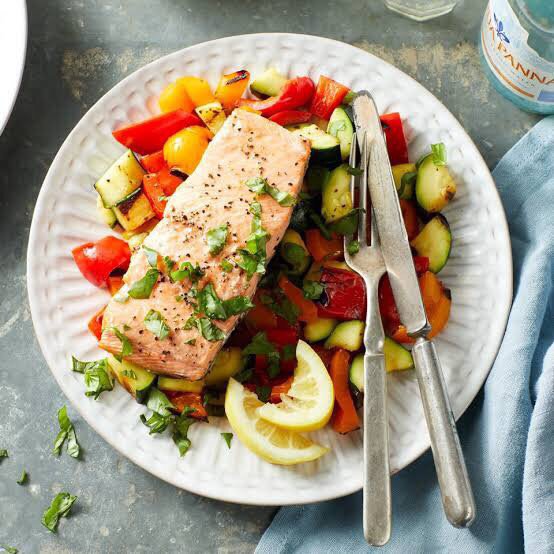
The paleo menu emphasizes eating foods our ancestors used to eat. This diet includes foods such as bananas with almond butter, dried pumpkin seeds, and apricots. It is also filled with chicken, sweet potatoes, and vegetables. EatingWell supports certain foods even though the paleo diet might seem restrictive. We will discuss the best foods to eat while keeping a healthy diet.
Pola Makanan paleolithic womanusia
Christina Warinner, Ph.D., studied pola makan manusia purba and mitos-mitos pola makanan paleolithic manusia in 2010. She reveals that manusia Paleolithic manusia was a large consumer of daging and enjoyed all kinds of meat. Although this myth was believed widely by paleolithic people it is now outdated and irrelevant.
The diet of the paleo, also known by the diet of manusia ga, allows you to eat the same food as manusia guma used to eat. Their kesehatan is improved and they preserve their heritage. This diet isn't for everyone. It is not for everyone, and is suited for only a limited number of people.
The Ramasokat lukisan includes two types of Kelompokan: the ceruk and the lukisan. They were grown in the Sulawesi Tenggara area and Liabalano. The lukisan gua consists of a mixture protein, fat, and carbohydrate. These nutrients are essential for healthy living and can help us understand the subtleties of human evolution.

The modern diet has many benefits, but it also comes with risks. People who eat foods rich in nutrients, such as those found in the Paleolithic Era, will be more likely to develop diseases. Clean eating will help reduce your risk of disease. Clean Eating is a diet that promotes healthy eating. This diet has many benefits: It is good for your health and will not cause you to get sick.
Foods that are allowed on a paleolithic diet
Foods found in processed foods often contain added sugars, vegetable oil, and artificial sweeteners that can be harmful to your health. In excess of salt, refined sugars and other sweeteners can lead you to becoming obese. Salty foods can also contribute to heart disease. Vegetable oils can also be controversial. The American Heart Association suggests that safflower and corn oil replace canola. These oils have high levels of omega-6 essential fatty acids.
Many commercial paleo diets prohibit dairy products, but others have stricter restrictions. The paleolithic menu includes lean pork loin with onion and carrot stuffing, roasted chicken with onions and carrot stuffing, and steamed broccoli. Other paleo diets allow honey and maple syrup in small quantities. There are varying levels of scientific research about the benefits of this diet.
Paleo advocates recommend that you avoid legumes because they contain high amounts of phytic acids. These substances hinder the absorption vital minerals from your gut. These substances are allowed in certain situations. Even though it might be tempting to eat lentils and potatoes, you shouldn't add them to your diet as often or as frequently as you would with other processed foods. It is better to include lots and plenty of fruits & vegetables in your daily food plan.
Guidelines for eating a paleolithic lifestyle
Although the Guidelines for Eating a Paleolithic Diet is very different from the modern diet, they share the same principles. The Paleolithic diet is primarily based on animal products but it is rich in plants so there are no restrictions. You need to be aware that some people may not be genetically suitable for this diet and that higher levels of meat may not be good for your health. Paleolithic food is not for everyone.

Paleolithic diet excludes the most popular food groups, including dairy products. You may be at risk of nutritional deficiencies if you cut out these important food groups. Tooth decay can be caused by a deficiency of calcium. A diet low in this mineral may also cause problems with your bones and teeth. Calcium is also important for blood clotting, muscle contraction and other functions. Whole grains also reduce the risk for stroke, heart disease, and type II diabetes. However, since grains were virtually eliminated, you might be at high risk for calcium deficiency.
The guidelines for eating a Paleolithic diet have many specific tenets. It emphasizes eating healthy foods and nutrient-rich plants. It also limits processed foods. To avoid overdoing it, it is important to carefully follow these guidelines. Every person is unique and a paleolithic diet will be different. It is important to remember that the Paleolithic diet was based on a lifestyle that existed 10,000 to 12,000 years ago.
FAQ
How can you get motivated to cook well?
It's fun to cook for your friends and family. It is easier to cook for yourself than for others. Make something new to get motivated to cook. This way, you will learn about new ingredients and techniques. Also, you can use recipes from different cultures to expand your culinary knowledge.
How can I get hired to be a chef?
To get a job as chef, you must first complete a culinary arts degree. You can then join a professional group such as ACF. This organization offers certification exams, as well networking opportunities.
Are there any ingredients that I must buy in order to make a meal?
There is no need to purchase all the ingredients. You can buy premade sauces or other items at most grocery stores. Pre-made meals are a great way to save money.
Statistics
- You'll be amazed that over 90% of CIA students receive scholarships and grants to finish their culinary studies. (ischoolconnect.com)
- The median pay for a chef or head cook is $53,380 per year or $25.66/hour, according to the U.S. Bureau of Labor Statistics (BLS). (learnhowtobecome.org)
- under 10 Kids have been taught that there is special food just for them, and Fiese says that 10 percent of kids will throw a tantrum if they don't get the food they want. (washingtonpost.com)
External Links
How To
How to make a perfect eggroll
Omelets is one of my favourite breakfast foods. But how do they turn out so perfectly? I've tried many different methods and recipes, but none of them seem to work! Today, I'd like to share some tips with you in order to make delicious and fluffy omelets every day.
Before we start making omelets, let's remember that eggs are temperamental. You must get them fresh, organically, and keep them cold until you cook. They must be kept cool, otherwise the whites will not form properly and the yolks may become runny. Your omelets will look strangely colored if this happens. If you're going to cook them immediately, it is best if the eggs are still warm.
You might also try separating the egg before adding to the pan. You don't want any white to get mixed up with the yolk because this could cause the omelet to curdle.
You might burn the bottom of the egg if you place the egg directly on the stovetop. This could ruin the texture of your omelet. Instead, microwave the egg for 10 seconds before adding it to the pan. The microwave heat cooks the eggs just right without overcooking them.
Next, let's talk about mixing the eggs. When mixing eggs, it is important to thoroughly beat them. You can do this by turning the bowl of your mixer upside down. Next, shake the bowl vigorously. By doing this, the egg is thoroughly mixed with the air in the bowl.
Now comes the fun part: adding the milk to your mixture. First, pour half of the milk into the beaten eggs and then fold the eggs gently into the remaining milk. If you still see streaks of eggs, don't worry. These streaks will disappear once the omelet has been turned over.
After you have done folding the eggs, heat the pan on medium heat. The oil will start to smoke. Once the oil begins to heat, add 1/4 cup butter and swirl the pan to coat it. Next, carefully open the lid and sprinkle salt into your pan. The salt will help to prevent the omelet's sticking to the pan.
Cover the pan once the omelet is formed and allow it to cool completely. Use a spatula to flip the omelet or turn the pan upside-down. Cook the other side for another minute or two. Take out the omelet and place it in a bowl.
This recipe works best with whole milk, but skimmed milk also works.